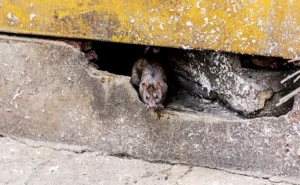
In recent years, rodent monitoring technology has become a cornerstone of modern pest management. These devices provide data-rich insights, offering an edge in understanding rodent behavior, optimizing interventions and enhancing safety protocols.
This technology equips pest management professionals (PMPs) with insights that allow them to anticipate and address issues before they escalate. However, there are at least five additional — and perhaps less-obvious — ways rodent monitoring can help strengthen your rodent control service offerings.
1. Unraveling known habits and movement patterns.
Rodents are creatures of habit, often following consistent routes and routines. Rodent monitoring technology captures these movement patterns in real-time, including the time of day it occurs. This critical information allows PMPs to create a targeted, efficient approach
at each account.
2. Addressing bait shyness.
One of the most frustrating challenges in rodent control is bait shyness — when rodents avoid bait even in areas of high activity. Rodent monitoring devices reveal such scenarios by detecting presence without bait consumption. For example, technicians may find bait untouched but notice urine stains upon inspection, which unequivocally indicates rodent traffic.
The tendency to equate “no bait consumption” with “no activity” underscores the need to rethink training practices. By trusting the data provided by these devices, PMPs can adapt strategies for better outcomes.
3. Reducing false positives and building confidence in data.
Advancements in rodent monitoring technology have evolved to significantly decrease the instances of false positives. Despite this, skepticism among some technicians persists, as they occasionally disregard device data in favor of traditional methods. However, it’s important to recognize just how reliable these devices are today and adjust interpretations accordingly.
4. Linking activity to environmental factors.
Rodent infestations often correspond to weather changes and other external pressures. Monitoring devices allow PMPs to correlate sudden spikes in rodent populations with events such as heavy rain or extreme temperatures. In fact, most cases of increased activity trace back to pressure originating outside the building. PMPs can validate these patterns by placing devices in outdoor areas, identifying exclusion opportunities and closing gaps before they become entry points.
5. Enhancing safety and access.
Placing rodent monitoring devices in hard-to-reach locations reduces the need to climb ladders or enter hazardous areas unless necessary. This improves safety profiles and streamlines monitoring efforts, allowing PMPs to focus on high-value tasks without compromising their well-being.
By integrating monitoring technologies into your rodent management strategy, you gain a comprehensive understanding of rodent behavior and elevate the efficacy, safety and sustainability of your operations. Let’s move beyond outdated training mindsets and fully harness the potential of these devices; the future of pest control depends on it.
Leave A Comment